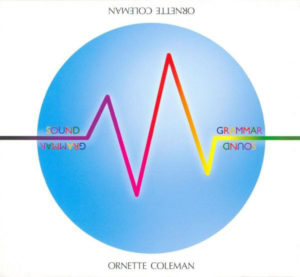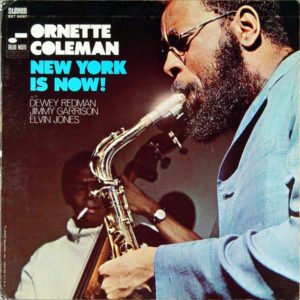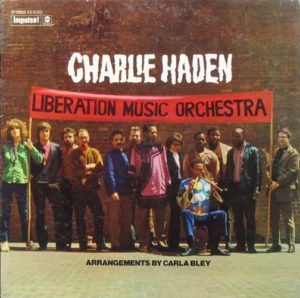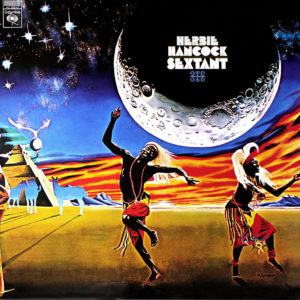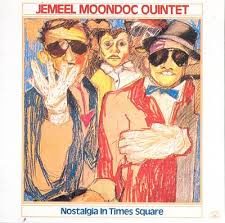I have written much about Ornette Coleman, his “Harmolodics” musical theory, and various commercial recordings he released over his storied career. Reading Slavoj Žižek‘s Lenin 2017: Remembering, Repeating, and Working Through, some clarifications occurred to me that, I think, go a long way to explaining what separates Ornette’s most accomplished work from the rest (that rest still being impressive unto itself).
As I have quoted extensively in the past, Paul Bley‘s description of Ornette’s music and the role of composition (in an interview with Andy Hamilton in The Wire magazine, Sept. 2007) is one of the best available starting points:
“There was an article in Down Beat in something like 1954, in which I mentioned that jazz had reached a crisis and that AABA form had too many As, and not enough CDEFG. So I began working with groups where we would play totally free, and that led to a kind of dead end, because ‘totally free’ didn’t necessarily allow you to continue. A totally free piece is a totally free piece, end of concert. *** [But Ornette] suggested ABCDEFGHIJK, in which repetition was anathema *** It wasn’t totally free because totally free was A forever, metamorphosing. It was a form that took hold, because you could finally return to the written music, and the audience had something to hold on to.”
What if Bley’s description, with its emphasis on composition (often echoed by Ornette himself, and quite similar to Jacques Attali‘s notion of “composing” as a historical phase that breaks from “repetition”), is largely right but ever so slightly off the mark? Lars Lih has written extensively about V.I. Lenin (born V.I. Ulyanov) and his political tactic of heroic leadership. This entails setting a heroic example, not to impose upon or force others to act in a particular way, but to inspire them to act on their own in an effective way. Žižek calls upon Lih’s interpretation, and expands upon it using terminology adapted from literary theorist Fredric Jameson and Lacanian psychoanalysis. He says that Lenin acted as a “Master” or “vanishing mediator”.
“A true Master is not an agent of discipline and prohibition, his message is not ‘You cannot!’ or ‘You have to…!’, but a releasing ‘You can! — what? Do the impossible — in other words, what appears impossible within the coordinates of the existing constellation. *** A Master is a vanishing mediator who gives you back to yourself, who delivers you to the abyss of your freedom: when we listen to a true leader, we discover what we want (or, rather, what we always already wanted without knowing it). A Master is needed because we cannot accede to our freedom directly — to gain this access we have to be pushed from outside, since our ‘animal state’ is one of inert hedonism . . . . The underlying paradox here is that the more we live as ‘free individuals with no Master’, the more we are effectively non-free, caught within the existing frame of possibilities — we have to be pushed or disturbed into freedom by a Master.” (p. lxii; see also Comradely Greetings, p. 78).
“The function of the Master here is to enact an authentic division — a division between those who want to hang on within the old parameters and those who recognize the necessity of change.” (pp. lxiv-lxv).
In a similar vein, Ernest Mandel had written years earlier that thinking becomes effective when it
“learns to discover the mediations—the intermediate links—which articulate . . . contradictions, instead of juxtaposing them and ‘transcending’ them by virtue of this juxtaposition.”
Turning back to Ornette’s music, John Litweiler, in his nearly-definitive biography Ornette Coleman: A Harmolodic Life, makes some important observations about Ornette’s recordings with his Prime Time band in the late 1970s, when he began working with younger musicians steeped in rock traditions:
“The net effect of these recordings, then, is of an alto soloist of uncommon stamina accompanied by rhythm players who take their cues from him and whose strong-beat accenting affects his own rhythmic organization.”
Perhaps this hints at the failure of Ornette’s methods, while also hinting at their source of success elsewhere. Howard Mandel has described Ornette’s “Harmolodics” musical theory as being about “dynamic tension”, where:
“each and every member of his ensembles is expected to be listening to each and every other member, to be ready to react to what any and everyone is doing melodically and harmonically (the two being horizontal and vertical expressions of the same pitched material) and rhythmically, while hewing one’s own path through a composition.”
Mandel’s description is astutely accurate, as far as it goes, but what is needed is something more that explains what Litweiler obliquely drives at: a concept that explains why some Harmolodic performances/recordings succeed more than others. Mandel explains the strength of Ornette’s most effective work. But it is also necessary to probe the weaknesses inherent in Ornette’s approach from the beginning. It is here that the “vanishing mediator” (or leadership by heroic example) framework comes in, bolstered by Bley’s analysis.
The most successful Ornette performances begin with Ornette’s melodies. They key to success is that the other performers must be ready to then step in and supply everything else themselves, taking on co-leadership of melodic content. What is crucial is that Ornette was not going to supply the mechanics to his bandmates. There were basically no harmonic limits imposed on them. Performers were hanging on to the old parameters if they approached this in terms of “chord changes”!
When musicians “take cues” from Ornette’s performances or him from them, like on the lesser of the Prime Time band recordings, then his heroic leadership has failed to properly inspire his compatriots, because he has not yet “vanished”. He is, in however much a muted way, still controlling what they do. In this respect, Ornette remains an “Ego Ideal” (adopting a term from psychoanalysis) rather than a vanishing mediator. His bandmates are not acting out their own freedoms in the music, they are following Ornette’s (or vice-versa). In a practical sense, in these performances, the band members are just reflecting each others’ statements back again, with a bit of a lag.
At other times, when the music is a chaotic jumble, some of these sorts of recordings turn into precisely what Bley called “A forever, metamorphosing.” Even at its nadir, Ornette’s music hardly fit this description. But looking at other instances of semi-widespread free jazz practice (and let’s be honest here that free jazz was never that widespread), this often might be called chaotic surrealism. In other words, it is a crowd of musical performers each performing music arises from their unconscious minds. Discussing Sigmund Freud and Gustave Le Bon‘s respective theories of crowds, Jodi Dean noted that nothing new appears in crowds: “Rather, [in crowds,] the impulses repressed in the unconscious have simply become free to manifest themselves.” When people talk about totally spontaneous free jazz, they usually refer music structured according to the unconscious, denying the structure of the unconscious (and privileging the conscious). Which is not to say that music manifested from the unconscious is bad, but it should be identified for what it is, and it should not be projected onto what it is not.
Certain collaborations, as with The Master Musicians of Joujouka, offer little beyond this. They get stuck in a simplistic juxtaposition, and a retreat into the past.
One episode in Ornette’s life that always struck me is that sometime in the 1950s, while he was living in Los Angeles, some communists tried to recruit Ornette to the party. He rebuffed them, saying that while the communist party was officially anti-racist, he believed that the people trying to recruit him would have been racist if not for the constraints of the official party platform. With that rejection of explicitly communist politics, which otherwise seem like a close fit for Ornette’s musical outlook, he turned more toward a de facto anarchist political position that often looks curious like the “totally free piece, end of concert” problem Bley pointed out.
One of the most pernicious “revisionist” takes on Ornette’s music (unfortunately, somewhat widespread today among younger listeners) is to re-normalize him into existing paradigms, by asserting that he merely played be-bop — albeit a quirky kind of be-bop/hard bop — in the early days, and there was nothing particularly revolutionary about his music. This view is usually extended to say that Ornette did not play “free jazz” at all — overlooking the historical fact that the very term “free jazz” was developed to describe the music of Ornette and his contemporaries like Cecil Taylor! Rather, these revisionists usually insist that “free jazz” consists more or less exclusively in unwritten, “spontaneous” music that is completely, molecularly structureless — what Bley referred to as a “totally free piece, end of concert.” There are many problems with this view. Aside from “The Tyranny of Structurelessness”, and the limits of spontaneity imposed by the structure of the unconscious mind, this is classic revisionism in that it adopts the post-1968 view of a multicultural multitude acting purely and strictly horizontally (“democratically” is another term sometimes applied). Of course the reason many take this view is the now widespread influence of a particular brand of university discourse drawn from Michael Hardt and Antonio Negri, among others. But Jodi Dean, Žižek and a few others have critiqued this view as responsible in large measure for the collapse of the political left (especially after 1989/1991 and the fall of the Berlin Wall and the USSR). Going back to the “be-bop” pigeonholing, I suggest imagining a classic Venn diagram formed by two circles. In essence, the revisionists insist that to be “revolutionary” or constitute a “paradigm shift”, Ornette’s music must be mutually exclusive of what came before. They insist that the Venn diagram must be depicted as two separate circles, not overlapping, one representing the past and the other a truly revolutionary music (or, perhaps, that of two circles with one completely inside the other, like a doughnut hole). But this is a flawed argument of the “Beautiful Soul” variety (in the full Hegelian sense). It amounts to nothing more than a perverse insistence on a kind of impossible purity, untainted by the real world — indeed, these arguments are adopted not because of their methodological rigor, but are typically devised after the fact to justify preferences for musicians other than Ornette, without exploring the real reasons those preferences were developed beforehand (perhaps, unconsciously). But a paradigm shift can include a Venn diagram with two circles that overlap, with one circle effectively bridging the old with new territory. This is what Ornette’s music was always about. In the early days, his collaborators and bandmates came from be-bop traditions. So be-bop remained part of the music. But the music was not bound by the coordinates of be-bop. That was the achievement. It mediated the tension between be-bop and that which went beyond be-bop.
The other important point here, against the “revisionists” and also those who approach Ornette’s music from the standpoint of hyper-technical musical theory (usually by way of transcribing his recordings into Western notation, then analyzing those transcriptions), is that I see Ornette’s main contribution as philosophical and political. This very much fits Ornette’s own descriptions of “Harmolodics” and the purpose of his work as being about “freedom”. He once wrote about his theory in a super-Platonic way in Bomb magazine (Summer 1996):
“The composed concept of the music I write and play is called Harmolodics. The packaged definition is a theoretical method not exclusively applied to music. Harmolodics is a noun that can be applied for the use of participating in any form of information equally without erasing or altering the information.”
In a July 1983 Down Beat article, he had previously defined it by calling it
“the use of the physical and mental of one’s own logic made into an expression of sound to bring about the musical sensation of unison executed by a single person or with a group.”
In a snippet of an interview with Stephen Rush, he also responded to a question in which he equated Hamolodics to human equality:
“Stephen: ‘This constraint on civilization and the constraint on music is going to cause an end to jazz?’
“Ornette: ‘I know you’re right…. I know you’re right. And the reason why it is … sex, money, and race. In that order.'”
Ornette suggested a new meaning for why people make music and why they might do so. For this argument to prevail, I insist that it is not necessary that Ornette, himself, went to the furthest reaches of what his theory suggested. In other words, his performances and recordings need not adopt the most extreme meanings in order to have philosophically and politically opened space for new meanings, through music.
Contemporary notions of multitudes of singularities, fragmented pluralization, indeterminate forms, molecular spontaneous self-organization, a long tail of micro-initiatives, etc. tend to fit the sort of anarchistic tendencies in Ornette’s music. But this actually arose more in the post-Science Fiction era. One the one hand, after the cultural forces that peaked around 1968 (though the early 1970s, in the case of the Black Panther Party for Self Defense), it seems natural and uncontroversial that Ornette would be swayed somewhat by all that. And, indeed, Litweiler’s biography reveals that during the this time Ornette became somewhat preoccupied with becoming rich (which he did accomplish). But the crucial fault these anarchistic (and sometimes paleo-traditionalist) tendencies produce in Ornette’s music is that they rest on mere aggregation (hardly even juxtaposition), leaving no sense of tension, contrast, conflict. The music becomes static, adapting itself to any situation (yes, a kind of achievement in itself), but incapable of inducing change, and, crucially, incapable of inspiring the listener. Tension is simply preemptively resolved, and never apparent to the listener. While these methods perhaps suggest a kind of utopian musical practice useful for some kind of future utopia, in a pre-utopian present, this can lack appeal to listeners not involved in making the music.
Of course, a meta-criticism of the multitudinous individualism of Ornette’s Prime Time bands is that it is easy to overlook the “ferocity of commanded individuality” it entails (to adapt a statement by Jodi Dean). When critics lament that Ornette’s bandmates don’t always bring enough to the table, perhaps a more precise criticism would be that Ornette’s music demands too much of them in the way of uniquely individualized contributions? That is to say that the demands of the music are impractical, requiring unrealistically talented musicians to pull it off. The result is sometimes that of a “crowd” of individualized music makers (again adapting a term from Dean), without the experience of a “band” of music makers with a collective purpose. This, then, might be precisely the distinction between Ornette’s most vital music and his lesser works. The most successful music shows some kind of collective purpose, made possible through the loose and open-ended structure of “Harmolodics” mediated by Ornette go into truly uncharted territory, rather than just “spontaneous” individual efforts that each reflect back something already known and already established as possible. Ethan Iverson has also written (somewhat pessimistically) that:
“The use of Harmolodics can access a kind of emotion that is breathtakingly pure, as long as everyone makes the right decisions to serve the music. *** The successful application of Harmolodic theory almost certainly requires Ornette’s own participation as performer, and an improvising drummer besides.”
Le Bon, whom Dean calls an “odious reactionary“, wrote in the late 1800s, before Lenin’s time as an international public figure, but used Robespierre as an example of monstrous leader who, hypnotized by the ideas of the political philosopher Rousseau, was led along with the rest of crowds of the French Revolution that attacked traditional social structures. That view seems quite typical of latter-day (reactionary) detractors who despise the principle of free jazz, mostly for its lack of respect/adherence to traditional social structures and roles. No doubt, there must have been racists who said similar things about Ornette. But Le Bon’s description hardly seems to describe Ornette’s best music. It describes, at most, a “crowd” as something different and less than what Ornette achieved via a “band”. Lenin viewed Robespierre as an important historical precedent and a hero. So, we can at least see some continuity here in comparing Ornette to Lenin (and Robespierre and Rousseau), as part of an overarching political project working against reactionaries like Le Bon.
In the 1950s, when Ornette struggled to find an outlet for his new kind of music, his approach was in part to struggle to assemble a band of sympathetic players. As reviewer Patrick Brown astutely comments about the early album Tomorrow Is the Question! The New Music of Ornette Coleman!:
“As Ornette creeps toward the fulfillment of his destiny he gets his music more together than on his debut album, helped in no small part by Shelly Manne who sounds absolutely terrific here, and by an ever closer understanding with Don Cherry. Tunes are the sort of crazy, complex heads that he specializes in – impossible to predict what he’s got up his sleeve next – and soloing is budding into the maturity that really blooms (for me at least) on his next album [presumably The Shape of Jazz to Come, which was recorded next but was actually released prior to Tomorrow Is the Question], though he sounds quite in control here. I say this not so much to disrespect this, but as with many great jazz players whose music I come to late, hindsight lets me know where they’re going and I’m almost itching to hear them get there when I listen to something that sounds ‘wrong’ — in this case, I suspect that it’s the absence of Charlie Haden. Again, no disrespect is meant to the great Red Mitchell or Percy Heath, I just know how in tune with this group Haden will be and it creates a note of discord for me. Manne on the other hand sounds right at home – a shame he didn’t pack up and move to NYC with the others (and don’t read ill will toward Higgins or Blackwell into this). So it’s like this — Ornette knew very early on how he wanted his music to be made, and putting together the pieces of those who shared that vision took a few tries. Here, he’s almost at that point and at times this shines as brightly as anything from the Atlantic era. At other times I feel an undefinable something missing, something that takes it down a half notch for me. But it’s that close to being great, really, despite my seemingly disparaging review.”
Brown is basically making the point that Ornette’s music demanded certain kinds of players to be effective. Iverson has also noted that “One of the earliest longer pieces about Ornette is in A.B. Spellman’s Four Lives in the Bebop Business. When you compare Ornette’s profile to those of [the other interviewees], it seems that he’s trying to go the extra mile to communicate the importance of his sidemen to Spellman.” This hints at the proposition that Ornette’s success was, in part, forging a collective project in the form of a band (and, also, in the form of an audience; see The Battle of The Five Spot: Ornette Coleman and The New York Jazz Field). In contrast, after he achieved success, and after 1968, he became more interested in breaking down those collective projects and instead fostering crowd-like gatherings of individuals. This was a different project — though it could be said that Ornette still returned to his earlier project in different ways through the years, but his work was not exclusively in that realm.
As Ornette moved on to other pursuits, his role as a “vanishing mediator” (or perhaps, his compositions’ role as a “vanishing mediator”) faded and the torch was passed on to others. Anthony Braxton deserves a special mention here, given his long commitment to developing new compositional forms that do the same sorts of things Ornette (and his compositions) did in urging fellow players to free up their performances.
While I have mostly focused on the performance aspect of Ornette’s music, and how he related to his bandmates, it almost goes without saying that Ornette also established an “authentic division” among listeners. Frances Davis, writing a quarter-century after Coleman’s famous stand at the Five Spot club in New York City, said, “Coleman was either a visionary or a charlatan, and there was no middle ground between advocacy and disapproval.” (intriguingly, this article was entitled, “Ornette’s Permanent Revolution,” which parallels the title of Leon Trotsky‘s book Permanent Revolution).
Part of the purpose of this essay is to offer sympathetic criticism about the limits of Ornette’s musical vision, which, in my opinion, represents one of the most important of the 20th Century! His later years could have been more productive, perhaps, had he made more effort to document his “Harmolodics” musical theory (the term was first publicly mentioned in conjunction with Skies of America) to found a musical “school” that would institutionalize his program (akin to a political party). Many fans and critics who lament that Ornette never did this (despite his own statements that he was working on a book about Harmolodics) is that they wanted to join. This is sort of the hard part, precisely what Jodi Dean’s book Crowds and Party deals with. Ornette’s repeated equating of “Harmolodics” with a concept of “unison” very much maps onto Dean’s description of a “party” beyond that of a “crowd”. However, the rather isolated musical interventions Ornette staged in his later career often lacked the social purpose of his early attempts to pursue an agenda of “freedom”, those later activities sometimes reduced to the far less compelling goal of amassing a personal fortune. Maybe most importantly, Dean’s book, a reflection on the shortcomings of the anarchist underpinnings of events like Occupy Wall Street, is that Ornette’s loosely structured later bands were more like “crowds” that came together briefly, stated multitudinous demands, then dissolved, with little or no sustaining permanence. The refusal to stick with the slow and methodical building of permanent institutions (Dean’s emphasis in on a political party), is emblematic of the the individualist turn during the neoliberal era (see Jefferson Cowie‘s Stayin’ Alive), and also consistent with political failings of anarchistic political action over the same period. And central to that failure of institutional permanence is Ornette stepping away from being a “vanishing mediator”, and side-stepping efforts to concretely establish what “unison” means within “Harmolodics”. It was when he pushed his bandmates into a larger cause, then “vanished” to allow them to pursue the project of their own volition, that you end up with works like his Earth-shattering recordings for Atlantic Records. This is not to say that Ornette always appears on his recordings in a way that directly reveals his role as a vanishing mediator, but that the most successful performances arose out of situations in which efforts along those lines had taken place, whether through extended practice sessions, careful selection of band members having certain predispositions, or both, which established what sort of “unison” they were working towards. Those practice session techniques weren’t institutionalized or emphasized by Ornette publicly, but they mattered. I suppose my constructive criticisms might be best viewed with reference to Lenin’s mountaineering analogy “On Ascending A High Mountain” from his 1924 article “Notes of a Publicist,” which asserted the need to return to the starting point and begin again in order to reach the highest summit — something that other appreciations of Ornette’s music recognize. I think it is necessary to work through Ornette’s music theories, take them back to the beginning, and then push them ahead even further.

